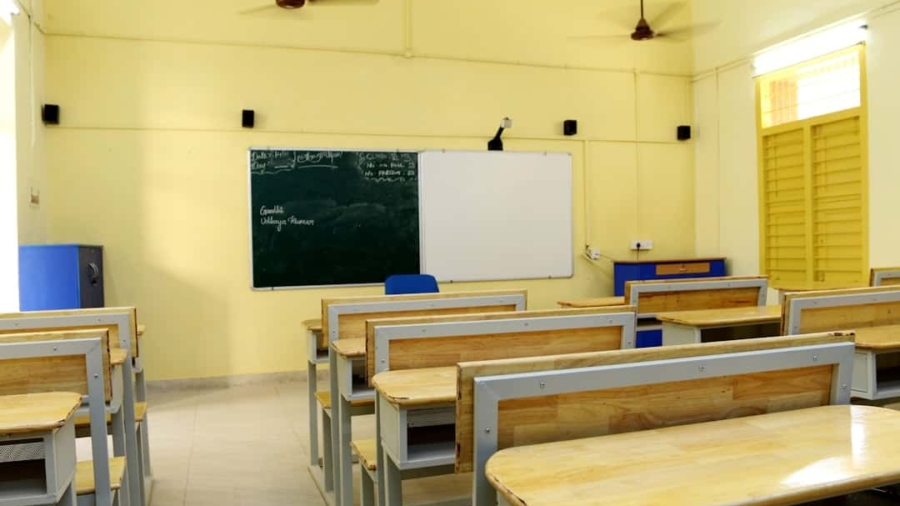Effective communication between parents and teachers is a cornerstone of a successful educational experience for students. This relationship fosters a collaborative environment where both parties can share insights, concerns, and strategies that contribute to a child’s academic and social development. When parents and teachers communicate openly, they create a support system that enhances the learning process.
For instance, when a teacher informs a parent about a child’s struggles in mathematics, the parent can reinforce learning at home, providing additional resources or support. This synergy not only helps the child overcome challenges but also builds a sense of community around the student’s education. Moreover, effective communication can significantly impact a child’s motivation and self-esteem.
When parents are informed about their child’s achievements and areas for improvement, they can celebrate successes and address challenges constructively. This positive reinforcement encourages students to take ownership of their learning journey. Additionally, when parents feel involved and informed, they are more likely to engage in school activities, attend parent-teacher conferences, and participate in discussions about their child’s education.
This involvement creates a holistic approach to learning, where the child feels supported both at home and in school.
Key Takeaways
- Effective parent-teacher communication is crucial for student success and overall well-being.
- EdTech plays a significant role in facilitating seamless communication between parents and teachers.
- Real-time updates and notifications help keep parents informed about their child’s progress and school activities.
- Interactive platforms enable collaboration between parents and teachers, fostering a supportive learning environment.
- Customized learning plans and progress tracking tools help tailor education to individual student needs.
The Role of EdTech in Facilitating Parent-Teacher Communication
Streamlining Interactions with Digital Platforms
In recent years, educational technology (EdTech) has emerged as a powerful tool for enhancing communication between parents and teachers.
For example, tools like ClassDojo and Remind allow teachers to send messages, updates, and reminders directly to parents’ smartphones.
Fostering Real-Time Communication and Engagement
This immediacy not only keeps parents informed but also encourages them to engage more actively in their child’s education. The convenience of these platforms means that communication can occur in real-time, breaking down barriers that may have previously hindered effective dialogue. Furthermore, EdTech provides a wealth of resources that can be shared between teachers and parents.
Empowering Parents with Accessible Resources
For instance, teachers can upload assignments, educational materials, and even video tutorials to platforms like Google Classroom or Seesaw. Parents can access these resources at their convenience, allowing them to support their child’s learning outside of school hours. This accessibility empowers parents to take an active role in their child’s education, fostering a partnership that benefits the student.
A Bright Future for EdTech in Parent-Teacher Communication
As technology continues to evolve, the potential for EdTech to enhance parent-teacher communication will only grow, paving the way for more innovative solutions that cater to the needs of families and educators alike.
Real-Time Updates and Notifications
One of the most significant advantages of utilizing EdTech in parent-teacher communication is the ability to provide real-time updates and notifications. Traditional methods of communication, such as phone calls or newsletters, often lack immediacy and can lead to delays in addressing important issues. In contrast, digital platforms enable teachers to send instant notifications regarding homework assignments, upcoming tests, or changes in school schedules.
This immediacy ensures that parents are always informed about their child’s academic responsibilities and school events. For example, if a teacher notices that a student is struggling with a particular subject, they can quickly send a message to the parent through an app like ClassTag or Bloomz. This prompt communication allows parents to intervene early by providing additional support or resources at home.
Additionally, real-time updates can help parents stay informed about their child’s behavior and participation in class. If a student receives recognition for their efforts or faces disciplinary action, parents can be notified immediately, fostering a proactive approach to addressing both achievements and challenges.
Interactive Platforms for Collaboration
Interactive platforms have revolutionized the way parents and teachers collaborate on student learning. These digital tools facilitate two-way communication, allowing both parties to share insights and feedback effectively. For instance, platforms like Edmodo or Schoology enable teachers to create discussion boards where parents can ask questions or share their observations about their child’s progress.
This collaborative environment encourages open dialogue and fosters a sense of community among parents and educators. Moreover, interactive platforms often include features that allow for shared resources and collaborative projects. For example, teachers can create group assignments that involve both students and their families, encouraging parents to participate actively in their child’s learning process.
This not only strengthens the bond between home and school but also provides students with a richer educational experience. By leveraging these interactive tools, educators can create an inclusive atmosphere where parents feel valued as partners in their child’s education.
Customized Learning Plans and Progress Tracking
The ability to create customized learning plans is another significant benefit of effective parent-teacher communication facilitated by EdTech. Each child has unique strengths and weaknesses, and personalized learning plans allow educators to tailor instruction to meet individual needs. Through platforms like IXL or DreamBox Learning, teachers can develop specific goals for each student based on their performance data.
Parents can access this information in real-time, enabling them to understand their child’s learning trajectory better. Progress tracking is essential for both teachers and parents as it provides concrete evidence of a student’s growth over time. Many EdTech tools offer dashboards that display students’ progress in various subjects, allowing parents to see how their child is performing relative to established benchmarks.
This transparency fosters accountability among students while empowering parents to engage in meaningful discussions with their children about their academic journey. When parents are equipped with this information, they can provide targeted support at home, reinforcing what is being taught in the classroom.
Bridging the Gap Between School and Home
Keeping Parents Informed
When parents are kept informed about classroom activities, curriculum changes, and school policies, they are better equipped to support their child’s education at home. This alignment between home and school creates a consistent message for students regarding the importance of education.
Addressing Concerns and Misconceptions
Bridging the gap between school and home also helps address any misconceptions or concerns that parents may have about the educational process. For instance, if a new teaching method is introduced in the classroom, teachers can use communication platforms to explain its purpose and benefits to parents. By demystifying educational practices, teachers can alleviate any anxieties parents may have about their child’s learning experience.
Fostering Trust and Support
This proactive approach fosters trust between educators and families, ultimately benefiting the student by creating a supportive network around them. By working together, educators and parents can provide a united front, ensuring that students receive the support they need to thrive academically and personally.
Increasing Parental Involvement and Engagement
Parental involvement is crucial for student success; effective communication plays a vital role in fostering this engagement. When parents feel informed and connected to their child’s education, they are more likely to participate in school activities, volunteer opportunities, and parent-teacher conferences. EdTech tools facilitate this involvement by providing easy access to information about school events and opportunities for engagement.
For example, schools can use platforms like Eventbrite or SignUpGenius to organize events such as workshops or family nights. Parents can receive notifications about these events through communication apps, making it easier for them to participate actively in their child’s school community. Increased parental involvement not only benefits students academically but also enhances their social development by exposing them to diverse experiences within the school environment.
Overcoming Challenges and Ensuring Accessibility
While the benefits of effective parent-teacher communication through EdTech are clear, challenges remain that must be addressed to ensure accessibility for all families. One significant barrier is the digital divide; not all families have equal access to technology or reliable internet connections. Schools must be proactive in identifying these disparities and providing resources or alternatives for families who may struggle with technology access.
Additionally, educators must be mindful of varying levels of digital literacy among parents. Some may feel overwhelmed by technology or unsure how to navigate communication platforms effectively. Providing training sessions or resources on how to use these tools can empower parents and ensure they feel comfortable engaging with teachers through digital means.
By addressing these challenges head-on, schools can create an inclusive environment where all families have the opportunity to participate actively in their child’s education. In conclusion, effective parent-teacher communication is essential for fostering student success in today’s educational landscape. By leveraging EdTech tools that facilitate real-time updates, interactive collaboration, customized learning plans, and increased parental involvement, schools can create a supportive network around each student.
Through these efforts, we can build stronger partnerships between home and school that ultimately benefit students’ academic journeys.
In addition to exploring how smart EdTech solutions enhance parent-teacher communication, educators may also be interested in learning about the benefits of using the Samsung Galaxy S21 to unlock the power of the galaxy. This article from Enicomp discusses the features and capabilities of this innovative device. Additionally, teachers looking to incorporate more engaging visual elements into their lessons may want to check out the article on the best software for 2D animation, also available on Enicomp’s website. Furthermore, educators interested in leveraging conversational commerce in their classrooms may find the article on what conversational commerce is to be a valuable resource.
FAQs
What are EdTech solutions?
EdTech solutions are educational technologies that aim to enhance teaching and learning experiences through the use of digital tools and resources. These solutions can include software, apps, platforms, and devices designed specifically for educational purposes.
How do Smart EdTech solutions enhance parent-teacher communication?
Smart EdTech solutions enhance parent-teacher communication by providing a platform for easy and efficient communication. These solutions often include features such as messaging, scheduling, progress tracking, and resource sharing, allowing parents and teachers to stay connected and informed about the student’s academic progress and well-being.
What are some examples of Smart EdTech solutions for parent-teacher communication?
Examples of Smart EdTech solutions for parent-teacher communication include communication apps, parent portals, online gradebooks, and virtual meeting platforms. These tools enable real-time communication, access to student performance data, and the ability to schedule and conduct parent-teacher conferences remotely.
What are the benefits of using Smart EdTech solutions for parent-teacher communication?
The benefits of using Smart EdTech solutions for parent-teacher communication include improved transparency, increased parental involvement, streamlined communication, and the ability to track student progress in real time. These solutions also save time and resources by reducing the need for in-person meetings and paper-based communication.



